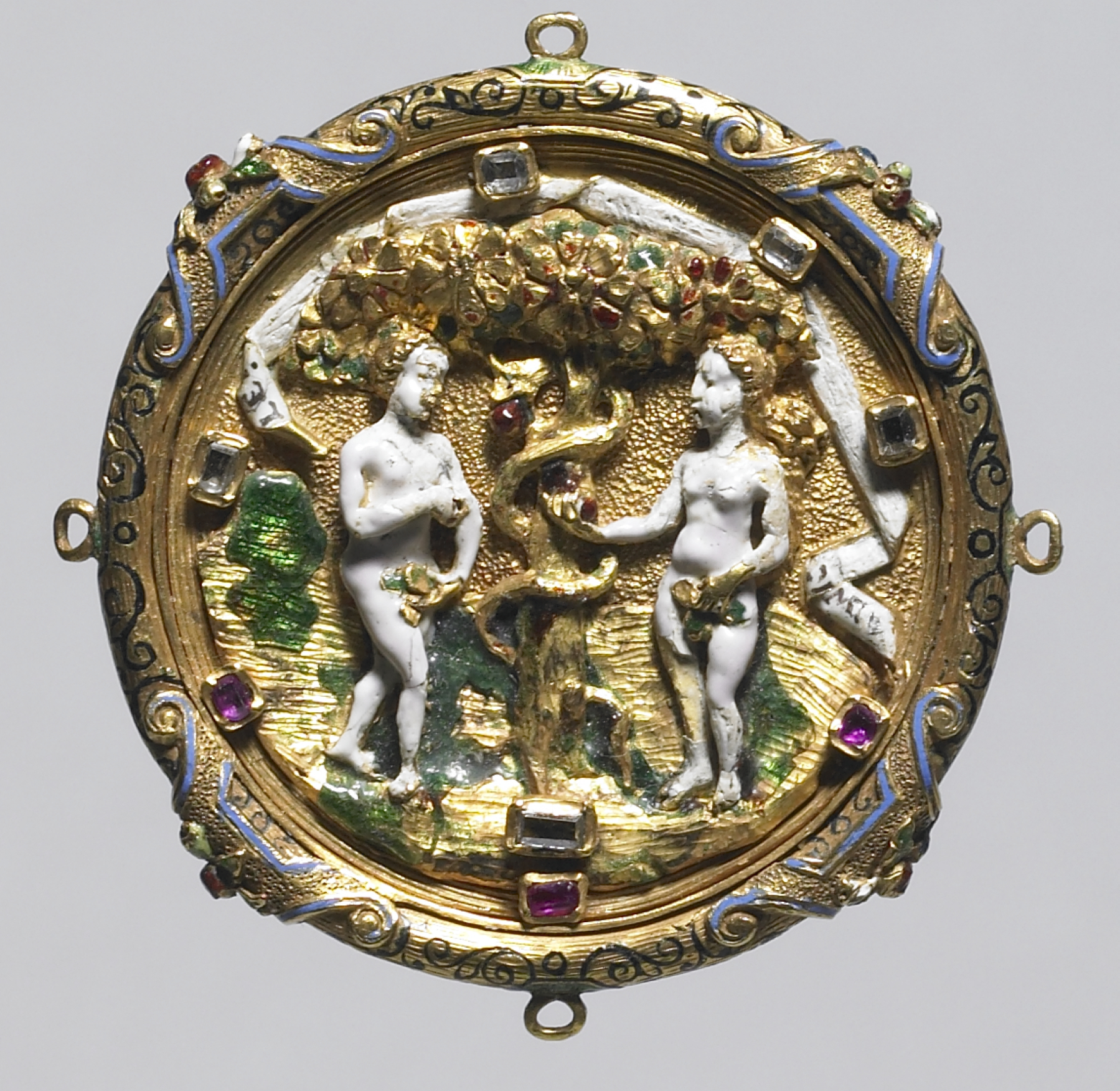Hat Badge with the Fall of Man
This enameled gold and jeweled hat badge has an applied relief of the Fall of Adam and Eve and an overhead ribbon with the remainder of inscription in Roman capitals: "LE…M." The inner border and tree base are set with five cut diamonds and three rubies in square collets framed in black arabesques alternating with cartouches of fruit and strap work; the gems were perhaps added later.
Hat badges were one of the most common types of personal jewelry during the Renaissance, worn predominately by affluent men to signal loyalties--religious, political or personal. In a Portrait of Francis I King of France from the workshop of Joos van Cleve (Walters 37.412), the king wears a bejeweled badge with the Virgin and Child. The practice seems to have started in the Middle ages with inexpensive lead badges which were purchased by pilgrims as mementos of holy sites they visited, as Walters 55.72.
The enameling technique is referenced as "en ronde boose", signifying enameling in high relief: the coating with opaque or translucent colors of sculpted forms in high relief (or in the round) in metal, usually gold. The technique was apparently invented in the late 1300s in France and developed there, first for religious subjects."Ronde bosse goldsmith's work requires great skill. The enamel coating must necessarily be very thin to align with the contours of the forms without impairing the modeling. Opaque white was used in Renaissance work for the flesh tints of figures worked in high and semi-relief. White was also applied to pick out small raised motifs and details, as this gave excellent contrast against the gold backgrounds. Translucent blue, green and sometimes red enamels were applied to other parts of these designs...." adapted from Erika Speel, Dictionary of Enameling (Aldershot 1998) 127.
The loops are for stitching the badge to a hat
Provenance
Provenance (from the French provenir, 'to come from/forth') is the chronology of the ownership, custody, or location of a historical object. Learn more about provenance at the Walters.
Seligmann & Co., New York [date and mode of acquisition unknown]; Henry Walters, Baltimore, 1905, by purchase; Walters Art Museum, 1931, by bequest.
Exhibitions
| 1996-1997 | Russian Enamels. The Walters Art Gallery, Baltimore. |
| 1979-1980 | Jewelry - Ancient to Modern. The Walters Art Gallery, Baltimore. |
| 1971-1972 | World of Wonder. The Walters Art Gallery, Baltimore. |
Geographies
United Kingdom, England (Place of Origin)
Measurements
Diam: 2 3/16 × D: 3/16 in. (5.5 × 0.5 cm)
Credit Line
Acquired by Henry Walters, 1905
Location in Museum
Accession Number
In libraries, galleries, museums, and archives, an accession number is a unique identifier assigned to each object in the collection.
In libraries, galleries, museums, and archives, an accession number is a unique identifier assigned to each object in the collection.
44.266


